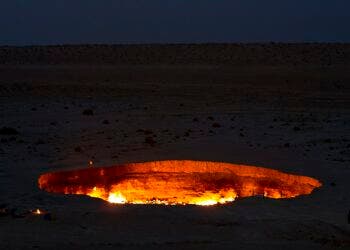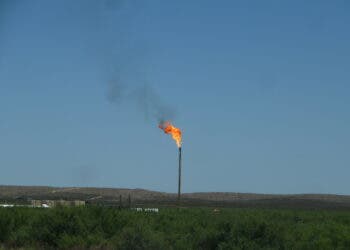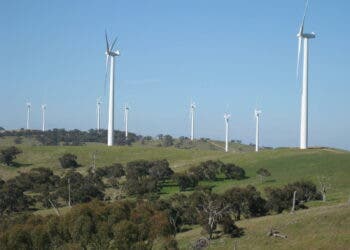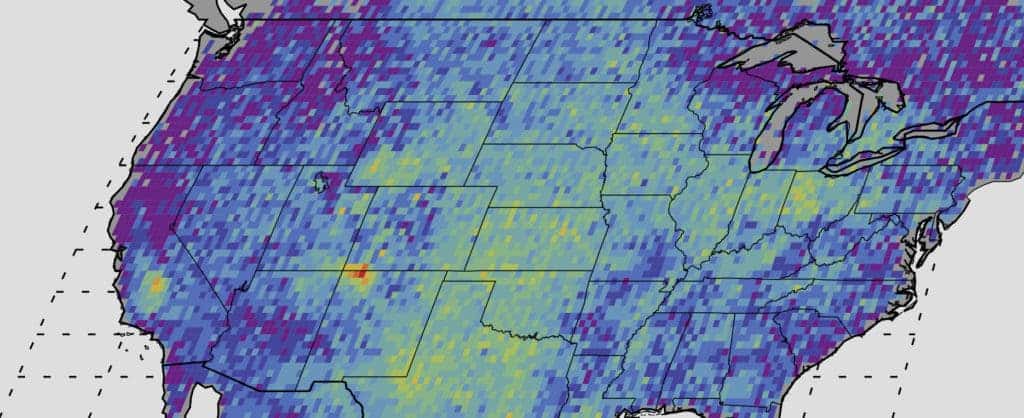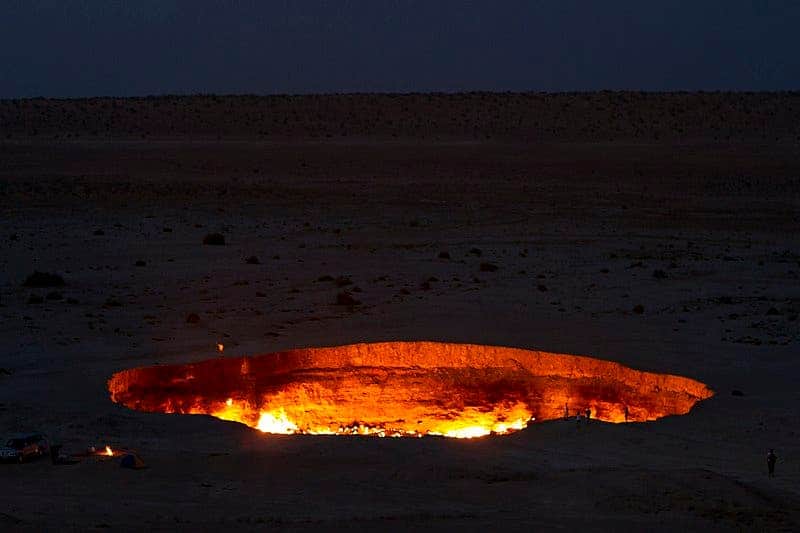
For more than five decades, a gaping crater in Turkmenistan’s Karakum desert has been burning nonstop. The huge flaming hole in the middle of nowhere — which can be seen for miles around — has earned itself the ominous nickname of the ‘Gates of Hell.’
What are the ‘Gates of Hell’ and why can’t the fire be extinguished?
The 230-foot-wide, 65-foot-deep pit of inferno, also known as the Darvaza gas crater, first appeared in 1971 under unclear circumstances. The prevailing theory is that the fiery abyss was triggered when an old Soviet drilling rig collapsed into the desert after hitting an underground cavern. Soviet engineers lit the whole thing on fire to contain the hazard, imagining the gas leak would burn for a couple of days and then it would be plugged. Well, it’s been more than 50 years and the fire is still burning strong.
Some Turkmen geologists, however, claim that the crater preceded the fire itself by at least a decade and didn’t catch fire until the 1980s. Turkmenistan is one of the most isolated countries in the world, second only to North Korea, so getting reliable information from this part of the world is challenging.
Today, the ‘Gates of Hell’ is a major tourist attraction for the few foreigners that venture into the former Soviet republic. At the same time, it’s also an environmental hazard that releases significant amounts of CO2 and methane, both potent greenhouse gases, and affects the health of people living in a nearby village of some 350 people.
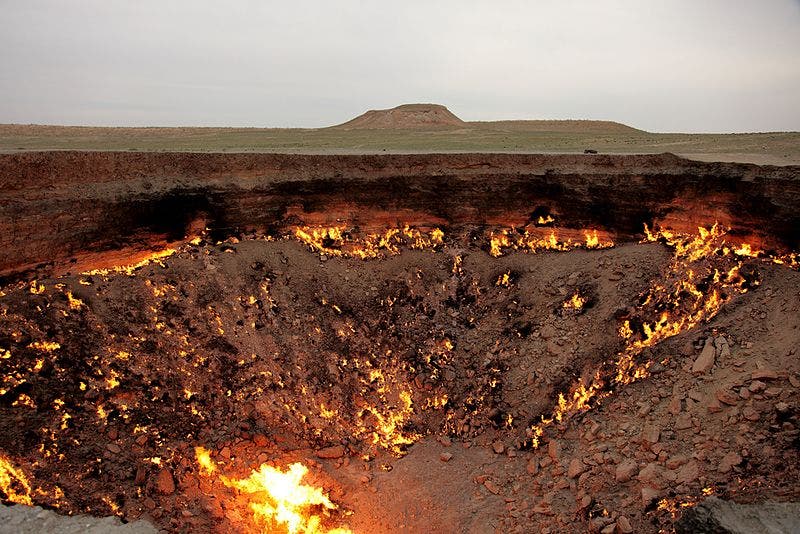
President Gurbanguly Berdymukhamedov, who has been ruling Turkmenistan with an iron fist for decades, asked experts to find a way to quell the flames in 2010 with no success. In early 2022, Berdymukhamedov appeared on state television ordering his government to put out the fire once and for all, saying the natural gas fire “negatively affects both the environment and the health of the people living nearby.” Just two years earlier, the Turkmenistan dictator used an off-road truck to speed around the Gates of Hell in front of state television — a rather dull show of force compared to his previous antics, such as rapping about his horse, ordering the construction of a giant golden statue of a Turkmen shepherd dog, or lifting a golden barbell in front of his cabinet.
“We are losing valuable natural resources for which we could get significant profits and use them for improving the well-being of our people,” Berdymukhamedov said in his national address.
It sounds like putting out a fiery pit — albeit a huge one — shouldn’t be that much of a big deal, especially for a state. However, it’s not that simple.
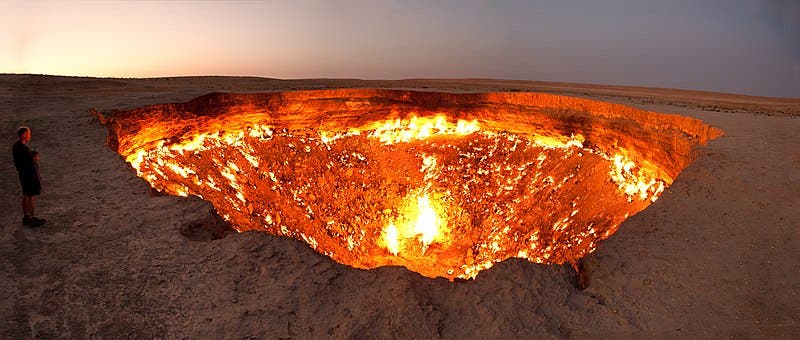
Turkmenistan is loaded with natural gas, having the fourth-largest reserves in the world. At Darvaza, natural gas never seems to stop seeping into the crater, which suggests the area underneath could hold a massive reserve. As such, Berdymukhamedov’s economic concerns may well be warranted. As for greenhouse gases and methane leaks, these are also of obvious concern but plugging the Gates of Hell won’t save the planet. One way to think of the Darvaza fire pit is as another gas-fired power plant — and there are hundreds across the world. The worst natural gas leak in history is thought to be the 2016 Aliso Canyon blowout in California, which vented almost 100,000 tons of methane into the atmosphere before it was plugged, causing a bigger warming effect than the much more publicized BP oil spill in the Gulf of Mexico in 2010.

The fate of the Darvaza gas leak is, for the time being, in limbo. It will probably keep burning for a while until it finally extinguishes itself. It wouldn’t be the first time this has happened. For instance, the town of Centralia, Pennsylvania, was evacuated in 1962 after a trash fire set off a chain of events that lit an underground coal seam that has been burning ever since. When the Nazis retreated from Norway’s Spitsbergen Island in 1944, they torched a local mine and that fire burned for nearly two decades.
Whether or not the Gates of Hell can be closed by human design remains to be seen. If previous efforts are any indication, plugging the hole is likely out of Turkmenistan’s capabilities. These efforts may be better spent improving the nation’s aging state-controlled energy sector. According to monitoring firm Kayrros SAS, Turkmenistan accounted for 31 out of 50 of the world’s most intense methane releases at onshore oil and gas operations in 2019. Turkmenistan’s overall methane emissions were only behind Russia, the United States, Iran, and Iraq, although its population numbers only six million.
